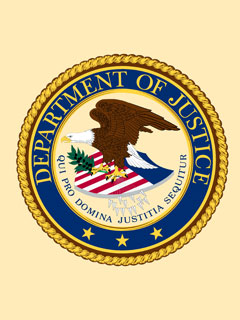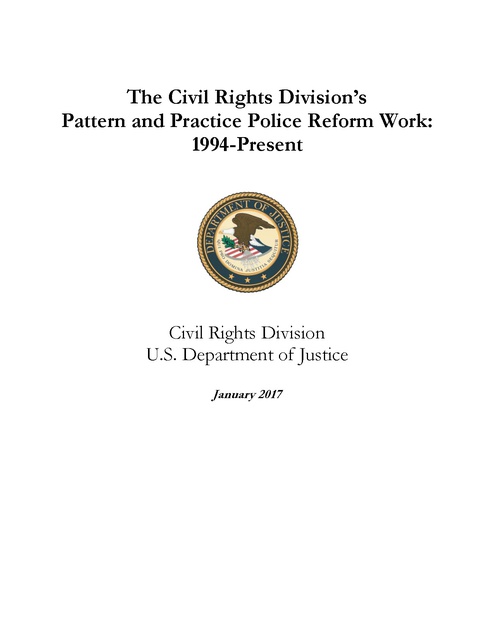Is the bedrock of justice truly unwavering, or is it subject to the tides of political currents? The Civil Rights Division of the Department of Justice, a cornerstone of American legal principles, finds itself under intense scrutiny, its actions and efficacy constantly debated, its very mission a subject of enduring fascination and concern.
The echoes of legislative battles and landmark Supreme Court decisions still reverberate through the halls of power. The Department of Justice's Civil Rights Division (CRT), a pivotal entity within the federal government, shoulders the weighty responsibility of enforcing federal statutes that safeguard fundamental rights. Its purview is vast, encompassing the prohibition of discrimination based on immutable characteristics: race, color, religion, sex, disability. The Division's reach extends across the nation, impacting the lives of countless individuals, ensuring that the promise of equal justice under law remains a tangible reality, even in the face of persistent challenges and systemic inequalities. From investigating allegations of police misconduct to prosecuting hate crimes and defending the rights of individuals with disabilities, the Civil Rights Division’s work is a critical component of the American justice system.
To delve deeper into the specifics of the Civil Rights Division, we can examine the organizational structure, the key figures leading the charge, and the significant cases and initiatives that have shaped its history. A closer look at the Division’s evolution will reveal how it has adapted to meet the evolving demands of a society constantly grappling with issues of fairness, equality, and justice. Understanding the role of the Civil Rights Division within the broader context of the Department of Justice provides an essential perspective on its importance and influence, shedding light on its capacity to navigate legal complexities, political pressures, and societal expectations.
Here's a closer look at the key aspects of the Civil Rights Division, its purpose, and its impact:
| Category | Details |
|---|---|
| Name | Civil Rights Division (CRT) |
| Department | Department of Justice (DOJ) |
| Mission | To enforce federal statutes prohibiting discrimination based on race, color, religion, sex, disability, and other protected characteristics. |
| Established | 1957 (Civil Rights Act of 1957) |
| Key Responsibilities |
|
| Organizational Structure |
The Civil Rights Division is headed by an Assistant Attorney General, who oversees several sections and units, each focused on specific areas of civil rights enforcement. These sections include:
|
| Legal Authority | Enforcement authority is derived from a variety of federal statutes, including the Civil Rights Act of 1964, the Voting Rights Act of 1965, the Americans with Disabilities Act of 1990, and others. |
| Impact | The Civil Rights Division's work has had a profound impact on American society, contributing to significant advancements in civil rights, including increased opportunities for marginalized groups and greater protection of fundamental rights. |
| Website Link | Department of Justice Civil Rights Division |
The Civil Rights Division operates under the guidance of the Assistant Attorney General for Civil Rights, a role that carries immense responsibility and influence. The leadership of this division plays a critical part in shaping the enforcement priorities, setting the strategic direction, and determining the types of cases to pursue. The individuals who hold this position directly impact the agency's approach to civil rights enforcement and the legal outcomes.
The work of the Civil Rights Division is not without its complexities. The division must constantly navigate difficult legal and political terrains, and it must address a wide array of challenges, including combating ongoing forms of discrimination, responding to evolving societal norms, and adapting to changes in legal precedents. The division's enforcement efforts are subject to public scrutiny, court challenges, and potential shifts in political will. These challenges underscore the vital role of the Civil Rights Division in promoting justice, fairness, and equality for all, and they emphasize the continuing importance of safeguarding the rights of all citizens.
The Civil Rights Division has faced a multitude of complex cases that reflect the multifaceted nature of civil rights issues in the United States. These cases have involved various forms of discrimination, including discrimination based on race, religion, national origin, gender, and disability. The division’s work has been instrumental in combating police misconduct, fighting voting rights violations, addressing housing discrimination, and protecting the rights of individuals with disabilities. These cases have often required meticulous investigation, comprehensive legal expertise, and unwavering commitment to justice, serving as critical milestones in the pursuit of equality and justice.
The Civil Rights Division has a long and storied history, marked by both triumphs and setbacks. Established in 1957 through the Civil Rights Act, the division has played a vital role in the advancement of civil rights. The Civil Rights Division has achieved significant milestones, contributing to crucial legislative achievements and groundbreaking legal precedents. The Division's influence on civil rights law in the United States has been remarkable, helping to define the scope of civil rights and the remedies available to victims of discrimination. The actions and policies of the Civil Rights Division have been significantly influenced by the political climate, evolving legal interpretation, and public opinion. The division's ability to effectively navigate the complexities of the legal landscape and the ever-changing social environment has been critical to its success.
The relationship between the Civil Rights Division and the Department of Homeland Security (DHS) is one that warrants close examination. This relationship is particularly evident in areas such as immigration enforcement, where both agencies share common interests and collaborate on projects and policies. The need for the Civil Rights Division to ensure that civil rights protections are upheld within the context of immigration-related actions and activities is becoming increasingly essential. The potential implications of these collaborations on individual liberties and community relations highlight the significance of effective oversight, particularly as the role of DHS evolves within the federal government.
The legal framework governing the Civil Rights Division encompasses a collection of federal laws designed to prevent and address discrimination. The cornerstone of this framework is the Civil Rights Act of 1964, a landmark piece of legislation that prohibits discrimination based on race, color, religion, sex, or national origin in employment, public accommodations, and other areas. Another important piece of legislation is the Voting Rights Act of 1965, which protects the right to vote and prohibits discriminatory voting practices. The Americans with Disabilities Act (ADA) of 1990, also falls under the responsibility of the Civil Rights Division, and it prohibits discrimination against individuals with disabilities in employment, public services, public accommodations, and telecommunications.
The Civil Rights Division has the authority to take a variety of actions to uphold civil rights, including investigations, litigation, and the issuance of guidance and regulations. In the event of a reported civil rights violation, the division can initiate investigations to gather facts, analyze evidence, and determine whether violations have occurred. When the Division discovers credible evidence of violations, it can file lawsuits in federal court seeking remedies for victims, such as monetary damages, injunctive relief, and changes to discriminatory practices. The division also produces guidance documents and regulations to clarify the law, provide recommendations for compliance, and inform the public about their rights. These actions collectively strengthen the division’s capacity to protect civil rights and guarantee equal treatment for all.
The role of the Civil Rights Division in handling complaints of discrimination is a key area of its work. The division reviews complaints from individuals who believe they have been subjected to discrimination in various areas, including employment, housing, education, voting, and access to public services. The division evaluates the claims and investigates the allegations to determine whether there is evidence of discrimination. If the investigation reveals a pattern of discrimination or unlawful practices, the division may initiate legal action to seek remedies for the victims. The process often involves a detailed examination of the facts, the applicable laws, and the specific circumstances of each complaint, underscoring the division’s critical responsibility in safeguarding individual rights and promoting equal opportunity.
The Civil Rights Division's commitment to addressing the issue of police misconduct and excessive force is of paramount importance. The division has the authority to investigate and prosecute law enforcement officers and agencies engaged in unconstitutional behavior, such as excessive force, racial profiling, and discriminatory practices. The division’s investigations are often broad and comprehensive, and can involve scrutinizing police departments' policies, practices, and training procedures. The Civil Rights Division frequently partners with local communities and civil rights groups to address the issue of police misconduct, establishing the necessary dialogue and collaboration to make a difference. The division is a vital instrument in the effort to hold law enforcement accountable, build public trust, and promote fair and just policing practices.
The role of the Civil Rights Division in the enforcement of the Americans with Disabilities Act (ADA) is significant, safeguarding the rights of people with disabilities in areas like employment, public services, and public accommodations. The Civil Rights Division is tasked with investigating complaints, bringing lawsuits against entities that violate the ADA, and issuing guidance and regulations to clarify the law. The division’s efforts under the ADA have led to significant advancements in accessibility, promoting equal opportunities, and removing barriers that previously excluded individuals with disabilities. The Civil Rights Division's work is essential in ensuring that people with disabilities can participate fully in all aspects of life, from work and education to recreation and civic engagement.
The Civil Rights Division’s involvement in voting rights is central to the democratic process. It enforces the Voting Rights Act of 1965 and other laws, protecting the right to vote and prohibiting discrimination based on race, color, or membership in a language minority group. The division monitors elections, investigates allegations of voter suppression, and litigates cases to safeguard voting rights. The actions of the Civil Rights Division often involve challenging discriminatory voting practices, ensuring fair access to the ballot box, and holding local and state governments accountable for their actions. In ensuring the fundamental right to vote for all Americans, the Civil Rights Division plays a crucial role in upholding the principles of democracy and protecting the integrity of the electoral process.
The Civil Rights Division works in collaboration with various federal agencies and other stakeholders to fulfill its mission. This collaboration can take many forms, including interagency task forces, joint investigations, and the exchange of information and resources. These partnerships help the division enhance its effectiveness in combating discrimination and protecting civil rights. These collaborations often involve partnerships with the Department of Education, the Department of Housing and Urban Development, and other governmental entities, to address specific civil rights issues. Additionally, the Civil Rights Division collaborates with civil rights organizations, community groups, and advocacy groups to identify emerging issues, provide assistance to victims of discrimination, and promote civil rights awareness.
The future of the Civil Rights Division is subject to continued debate and scrutiny, and its work will evolve with the challenges and opportunities of the 21st century. The division will have to adapt to new forms of discrimination, address evolving legal questions, and remain responsive to changing societal norms. The division must also deal with the influence of political dynamics and shifts in legal interpretations. As the Civil Rights Division continues to protect and promote the fundamental rights of all Americans, it will remain a crucial element in shaping the nation’s commitment to justice and equality.



